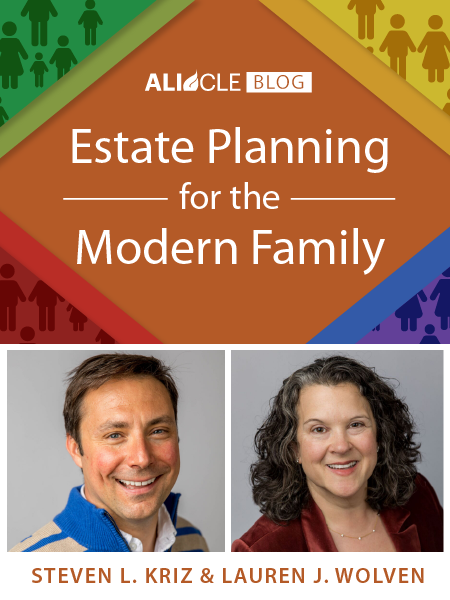
Lawyer Betty is referred a new client, Kathy, who needs some estate planning work. While Kathy has a large estate, her primary goal is ensuring that her daughter, Vicki, and Vicki’s family are adequately provided for upon Kathy’s passing. In conversations with Kathy, Betty learns that Vicki and her partner, Matt, are expecting a child. Betty assures Kathy that the estate plan will provide for Vicki and, ultimately, for the unborn child of Vicki and Matt. Betty prepares her usual estate documents, providing that, in the event of Kathy’s passing, the assets held in trust will be distributed to Kathy’s descendants per stirpes. In the event Kathy has no descendants, the trust provides that the assets would be distributed to Kathy’s heirs-at-law. Kathy signs all of the estate documents and is happy knowing that she has arranged her affairs.
A few years later, Betty receives a call that Kathy has died. The caller, who is the successor trustee of Kathy’s trust, informs Betty that tragically, Vicki predeceased Kathy. Betty assures the trustee that Vicki’s and Matt’s child, Audrey, is, of course, a beneficiary of the trust.
Over the course of the administration, Betty discovers that Matt is a transgender male and is actually the parent who carried Audrey in gestation and gave birth to her. Vicki and Matt never married. Vicki is not listed as a parent on Audrey’s birth certificate, was not biologically related to Audrey, and never adopted Audrey. Kathy’s trust defines “descendants” according to a traditional definition that references biological relationship and adopted children only.
Knowing that Kathy intended to provide for Audrey, Betty nonetheless instructs the trustee to distribute the trust assets to a descendant trust for Audrey under the trust. Kathy’s sister, Judy, however, who disapproved of Vicki’s relationship with Matt, brings an action contesting the trust administration, alleging that she is Kathy’s sole heir. The court agrees.
The result here is not consistent with Kathy’s intent. Does Kathy bear fault for not sharing with Betty the details regarding Vicki and Matt’s relationship and Audrey’s birth? Absolutely. Stories of clients not sharing full information are common. In such situations, it is important to ask ourselves why the client omitted relevant or important information. Kathy did not appear to be reticent about discussing Vicki, Matt, and their baby, but was Kathy uncomfortable sharing with Betty the modern structure of Vicki’s family? Could Betty have asked better questions to elicit the information? Had Betty looked at her boilerplate language in the last 10 years to consider whether her definitions have kept up with societal changes?
We are in a period of evolution of the definition of “family.” As planners, we need to be thoughtful about understanding our implicit biases and creating an environment of open communication with our clients about their families. Many clients, like Kathy, will have experienced negative reactions from those close to them about nontraditional relationships. Being thoughtful about the psychological impact of what lesbian, gay, bisexual, transgender, and queer (LGBTQ) clients and their families experience in the world can make us better able to elicit information and encourage open communication.
The Planner’s Role
Much like internists and family doctors, estate planners treat individuals and families from birth through death and everything in between. Given our unique position, we can do more than just solve problems—we can try to foresee issues and prevent them from blossoming into larger problems. Working with families, we can be more effective when we view our job as treating the whole person.
Planners are in the unique position of working with clients on planning at a very personal level. We can become a more complete resource for our clients by learning about and being prepared to advise our clients on the specific legal and societal issues facing the LGBTQ community as a whole.
Many lesbian, gay, bisexual, and transgender persons are not comfortable enough to discuss their sexual orientation or gender identity with their healthcare providers.1 Six percent of transgender people report having a negative experience with an attorney because of being transgender.2 While there is no study solely focusing on estate planners, we can infer that there are probably many persons who do not feel comfortable discussing their sexual orientation, gender identity, or that of their family members, with us. If we are more inquisitive in a thoughtful manner and become creative about how we “ask” for information, we may receive more details that will help us craft betters plans for our clients. To position ourselves to address the shortfalls in the law, we need to become educated about the particular issues LGBTQ persons face in their daily lives, the terminology to use when advising LGBTQ individuals and families, and ideas for preventing, resolving, and planning in anticipation of problems.
CLICK HERE to read the full article, which was originally published in ALI CLE’s The Practical Lawyer.

The Practical Lawyer
Get access to The Practical Lawyer and other ALI CLE journal archives here.
